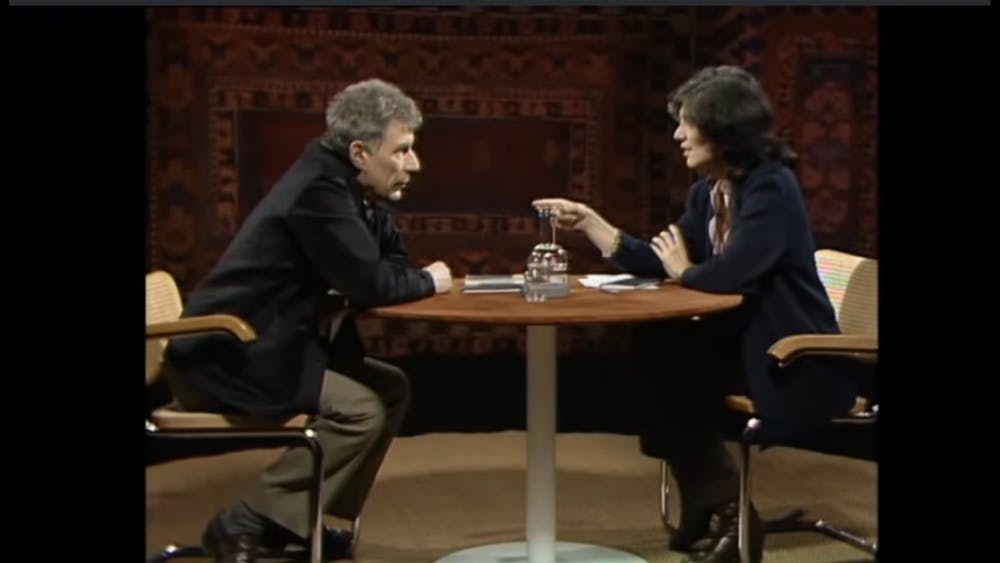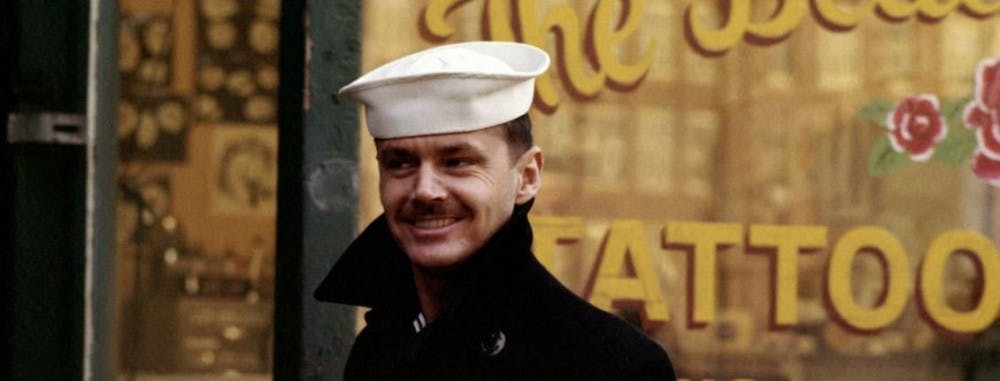In an astonishing coincidence with his death, I was watching John Berger’s Way of Seeing which led me to a conversation of his with Susan Sontag. Their discussion dealt with many topics relating to art, perspective, and storytelling. Whether or not I could write about all of the points made, it would honestly be better just to watch the video itself. With that said, something that particularly struck me was of meaning in dreams, in which Berger argued that the things found in the dreams had immediate meaning while Sontag argued that only after the dream did one assign meaning and interpret the things found in the dream.


I’m not an expert on the history of art theory or hermeneutics or any such things, but I’m fairly certain that this argument has a lot of significance in 20th/21st century art criticism, especially with regards to structuralism and deconstruction. So it seems interesting enough to ask: Is art interpreted as a whole or of its parts and within its specific context?
And the answer, obviously, is both. When interpreting a movie or a book or any complete work, a person is thinking about its characters, structure, plot, etc.; these are specific elements of the artwork that have stood out to them or were particularly emphasized. However, they also must essentially see these parts in the context of the whole.
An example that I go back to a lot is the movie ‘the Last Detail,’ directed by Hal Ashby. In it, there is a character, Billy Buddusky (played by @dril), and there's a wide range of interpretations regarding whether or not he was a likeable character or a good person up until the end. Buddusky’s characterization throughout the movie had seemed to emphasize his masculinity, or at least his masculine posturing. While this certainly could make him unlikeable to some, others might find it endearing.

My initial viewing of the film gave me an interpretation of the character which did not completely change by the end of the film, because Buddusky’s actions still fit with his characterization. Had the character not seemed to act based on what he was characterized to be, my interpretation would have been remolded to fit the new details. However, reflecting on the movie, and indeed Buddusky, I had to look at him within the full context that was provided. This gave me a narrower, more negative view of the character, even though I had been somewhat neutral while I was watching.
So while the character by himself had certain and immediate meaning to me that did not require watching the whole film, he couldn’t ultimately be removed from the whole.
A likely more common example of interpreting parts and whole is in music. Popular albums, such as Kanye West’s My Beautiful Dark Twisted Fantasy, Kendrick Lamar’s To Pimp a Butterfly, and Beyonce’s Lemonade are all considered concept albums, works with overarching themes such as fame, racism, and romance. While these works have been interpreted for their meaning on the whole, they all have multiple singles, and are generally listened to as individual tracks rather than as a whole. Placing these songs in the context of the album might give them distinct meaning, and considering that the full album was the artist’s intention, this is important. Furthermore, placing them in the context of the production effort and artists’ lives can certainly help gain an understanding of the meaning. However, these songs are not always (or even often) placed in that context, so they gain meaning on an individual basis. A song like Monster comes to mind, which in the context of the album/West’s life further themes of narcissism and power. On its own, it’s not as likely to evoke those ideas. Rather, it’s more likely is remembered for “sasquatch Godzilla king kong loch ness, etc” and other specific details. Placed in the context of a playlist of various artists, its’ meaning becomes much more musical—how does the style/tempo/structure of the song fit in with other songs on the playlist?
Of course, this makes meaning much more complicated and moving. Noted literary critic and notorious asshole Harold Bloom believes “a feminist or Marxist reading of Hamlet would tell us something about feminism and Marxism, but probably nothing about Hamlet itself.” Bloom’s position on determining meaning, which generally speaking is the position of all purely aesthetic schools of thinking, suggest that art should be understood entirely as it is presented, away from outside context. That is an impossibility.
Certain phrases and portions of Hamlet stand out, because of their popularity (i.e. “To be or not to be”), or for personal reasons (Hamlet shitting on king uncle for drinking and criticizing alcohol as something that turns man into a beast; Hamlet was straight-edge). What becomes clear is firstly, that you can’t remove a work from the context of the time it was written, because it was that which informed the author and gave him intent. Second, you can’t remove it from the present, the point at which you are reading and remembering it, as that informs your own view of the work. Finally, all that is in between or has led up to these moments cannot be discounted, because they provide the overall context for the meaning derived of the work.
Going back to Berger and Sontag’s discussion, at one point Sontag states that, when she is reading a work by Tolstoy, she places herself in 19th/early 20th century Russia. While this removes her from the context of the work, the work’s context is determined by the frame she’s placed around it. How would she know what Russia was like in the 1800s? Whatever her image of that era of Russia is was not determined from her living there, but from other accounts and descriptions. So although she dissociates herself with the art she views, she still has to understand that the context she’s placed is entirely her own.
As an addition, the recontextualization of portions of a work also affect how one interprets art. The way phrases in a literary work or parts of a picture can gain new meaning when placed in new environments ultimately gives the original new meaning. This is less like putting a song in a playlist and more like creating a sample of an old song for a new song. Berger’s Way of Seeing illustrates this well. It also does a good job of explaining why memes are art, though it was made a few years before Dawkins coined the term.
Additionally, how one would interpret a work also changes over time; certain things stick with people and develop as they personally grow and the world around them changes. Ultimately, how one views things becomes clear as part of a greater whole: that of the readers’ point of view, complete yet still developing, and that of the world around them, which has and will determine the individuals’ point of view. It should be noted, however, that this whole is not necessarily interpreted with even-handedness. Certain parts will still stand out over time and be used to defend interpretation. Placed in a political context, while one may view many varying and even contradictory sources, certain ideas and things that support them stick and are later used during debates.These things are not necessarily things that fit with anyone’s overall point of view because their point of view is always changing based on new information.
It’s difficult to clearly express this point further without it seeming like meaningless ideas and contradictions, or like I’m repeating myself and others; ironically the implication is that I’m at all times repeating others and reinterpreting the ideas of others with other ideas, the new being determined by combining the old with more of the old. However, regardless of whether one likes, it happens (so heck to the haters). What I then understand it as is extreme subjectivity as the most concrete attempts for objectivity.





